Scratch Margin of Error Original Design / Scratch Built
Scratch - Margin of Error {Scratch}
Contributed by Dick Stafford
| Manufacturer: | Scratch |
Background
I really love the 5" Quaker Oats bins (and I like the contents too -
tastes good, helps your cholesterol, and even is relatively low carb). My
previous rocket was made out of three bins (four if you count the one I cut up
for couplers) and used a clear plastic Easter egg for the nose cone. I made the
fins out of 1 1/8" (or thereabouts) styrofoam. Odd I know, but that's why
they call them odd-rocs. It flew fine, but I wasn't that happy with the fins,
and was thinking about adding a bunch of 24mm mounts to eat some of the
$3.50/pk D12-0s I have been buying. So the solution was simple - rip off the
lower bin and fins, clean up the rings and coupler, and rebuild.
The Re-build
The lower coupler was nice and long and included a lower 3/32" ply
centering ring. So, I sliped a new bin on part way, leaving enough spacing at
the bottom for a bunch of 24mm mounts. I decided on eight mounts with gaps to
clear the 29mm motor retainers. I plugged the gap between the tube, slotted it
for three fins, and cut some nice big fins from light, cheap Luan plywood. I
made the 24mm motor unit removable, which should help in prepping the motors
with quickmatch. Here are some pics:
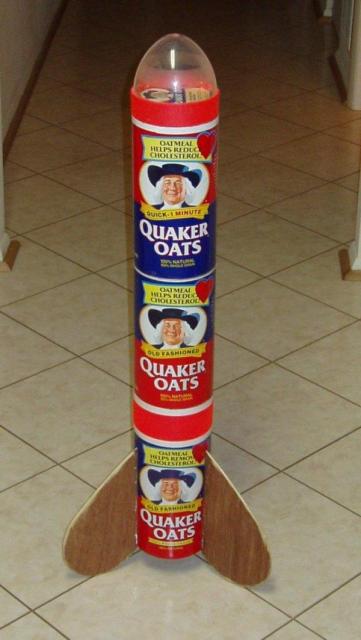
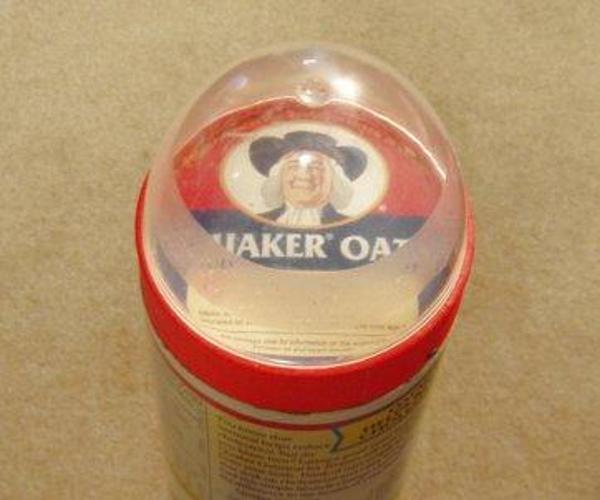
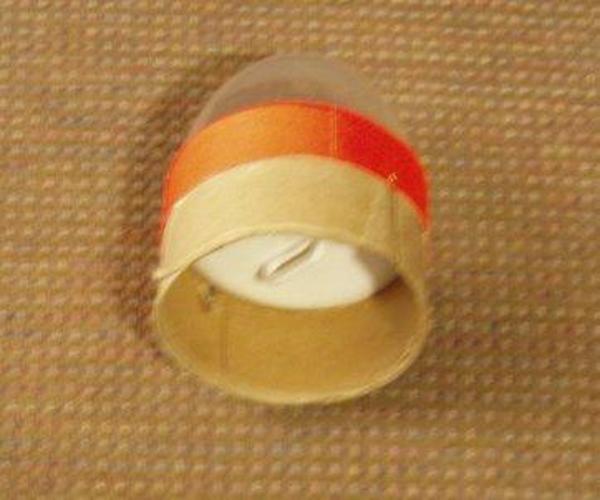
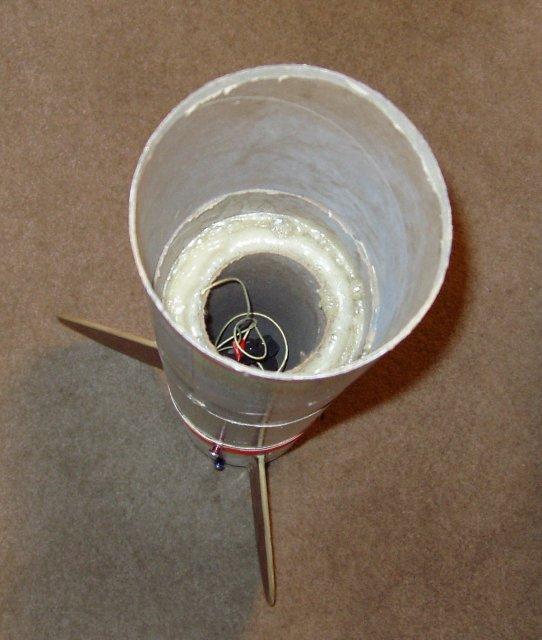
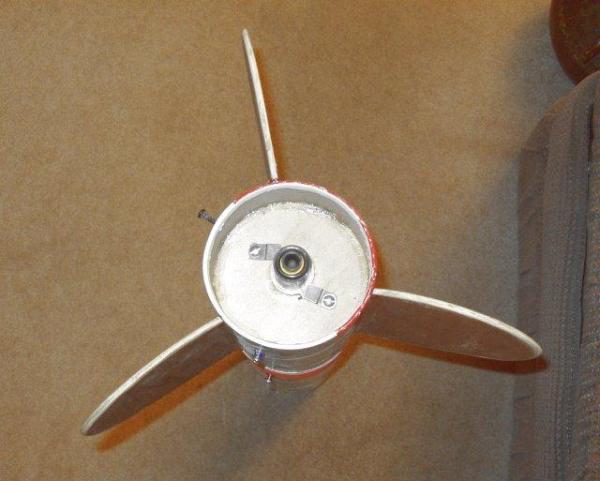
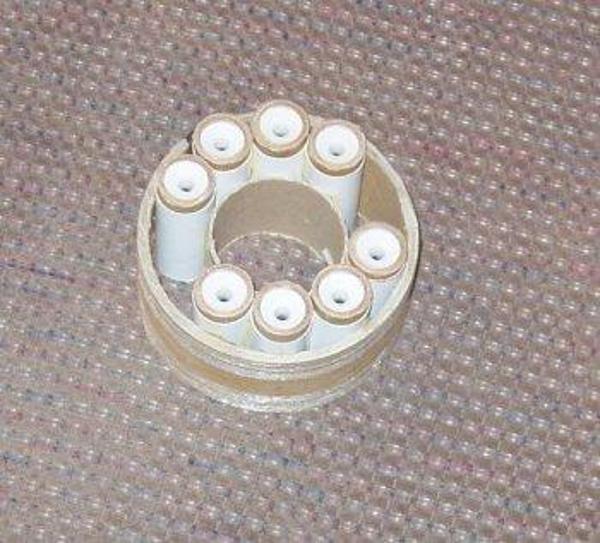
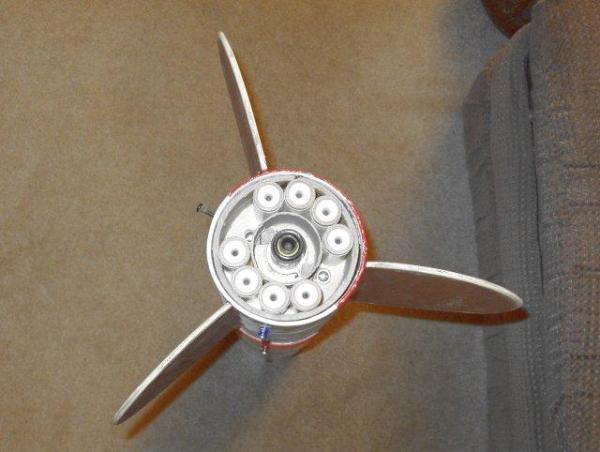
Flight Report
I flew The Margin of Error on 11/14/2004 at MDRA's ESL-78. It flew on a
G80-7 and eight D12-Ps lit using quickmatch. Well, actually only three of the
D12s lit. The boost was slow and several seconds late due to the reduced
thrust. Nevertheless, it was a good flight. Upon inspection, the quickmatch was
pulled out of the unlit motors, but had burned at the pad.
The second flight was on 12/12/2004 at ESL-79 with a G79-6 and eight D12-Ps. I took more care in taping the fuses to the D12s and positioned them using a dowel inserted into the main motor's core. The dowel was of course removed before flight. This time, all eight motors lit. Ejection was just past apogee and recovery was A-OK.
 |
 |